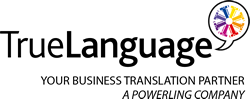This content has been archived. It may no longer be relevant
Technology has completely revolutionized the way that we live in the past twenty years. Today, Facebook is one of the most popular websites in the world, with more than 1.55 billion active users. But, ten years ago, Facebook was relatively unknown and unused.
Facebook isn’t the only example of technological advances that we have seen in recent years. Today, we have all of the world at our fingertips, thanks to the Internet. While it used to be that we needed a computer and Internet connection, today we carry around the most expansive collection of knowledge in our back pockets. Smartphones have completely changed our world. Our cell phones today are so much more than just a way to call someone—they are also computers, cameras, iPods, and so much more.
The world that we know would be completely different if it weren’t for technology. These advances have made things easier, faster, and more productive. They have allowed us to change the way that we work; the way we have fun, and the way that we communicate. But, while technology has done so much good for our generation, technology has also made us lazy. We no longer want to wait for anything. We are used to having anything we want at our fingertips.
The translation industry is not exempt from this. Some people might believe that computers and machines are taking the place of human translators, but this is far from the truth.
The Problem with Computer Translations
Thanks to many translation websites and apps that advertise themselves as easy and quick, people tend to think that translating should be free and simple. But the problem with these “easy translation” websites and apps is that they focus solely on a word-for-word translation. These tools do not look at the greater context, the culture or anything else. This word-for-word method leads to translations with a lot of mistakes.
When to Use “Easy Translation”
As the saying goes, there is a time and place for everything. These easy translation tools are definitely not useless, but you should know that they are not always appropriate. Picture yourself walking down the streets of Rome, vacationing during the summer. Suddenly, you don’t know where you are, or you have to go to the bathroom. Sure, you could stop someone and ask them, but what if you can’t find someone who speaks English?
Now you have to pick your brain and quickly try to remember the tiny bit of Italian you learned five years ago, but the problem is, you don’t know enough to actually talk to someone to get help. Luckily, with the help of these easy translation tools, you don’t have to be stranded on the streets of another country. Pull out your smartphone and use one of these tools to help you communicate with the locals.
Google Translate
Google Translate is a service provided by mogul Google that can translate text, speech, images, or real-time video from one language to another. Google recently announced real-time conversation translation. Before, users could only translate one sentence at a time, but now, you can seamlessly ask for directions in English, and the app will translate that into French for the other person. It can then collect their French response and translate that back into English for you. This is a must-have for those traveling to countries that don’t speak English. It is also worth mentioning how far Google Translate has come in the past year or two. It is natural to assume that it will only become more advanced over time.
Skype Translator
Skype Translator is an excellent tool for communicating with people all over the world. You can talk to someone in a different country and a different language, and have the ability to understand each other. This is revolutionary and could open up a world of possibilities when it comes to learning and exploring new cultures and languages. It still has some progress to make before mastering those. While Skype Translator can now converse in six languages using real-time translation, currently the software is only available as a preview. However, the company promises that anyone who has Skype will have access to the translator tool.
When Not to Use “Easy Translation”
Again, there is a time and place for everything. While these tools can be great for simple and quick translations, especially while traveling, they just can’t take the place of a human translator. If you are looking to translate something important, you don’t want to leave your fate up to a word for word translator.
A business setting is a perfect example of where you need to have a professional translation service. A lot more goes into the craft of translating than just interpreting words. If you are looking to have your important business documents translated so that you can reach clients, patients, or other business associates, you need to make sure that your translation is correct. If there are mistakes in your translation, you could confuse your reader, or, even worse, offend them.


